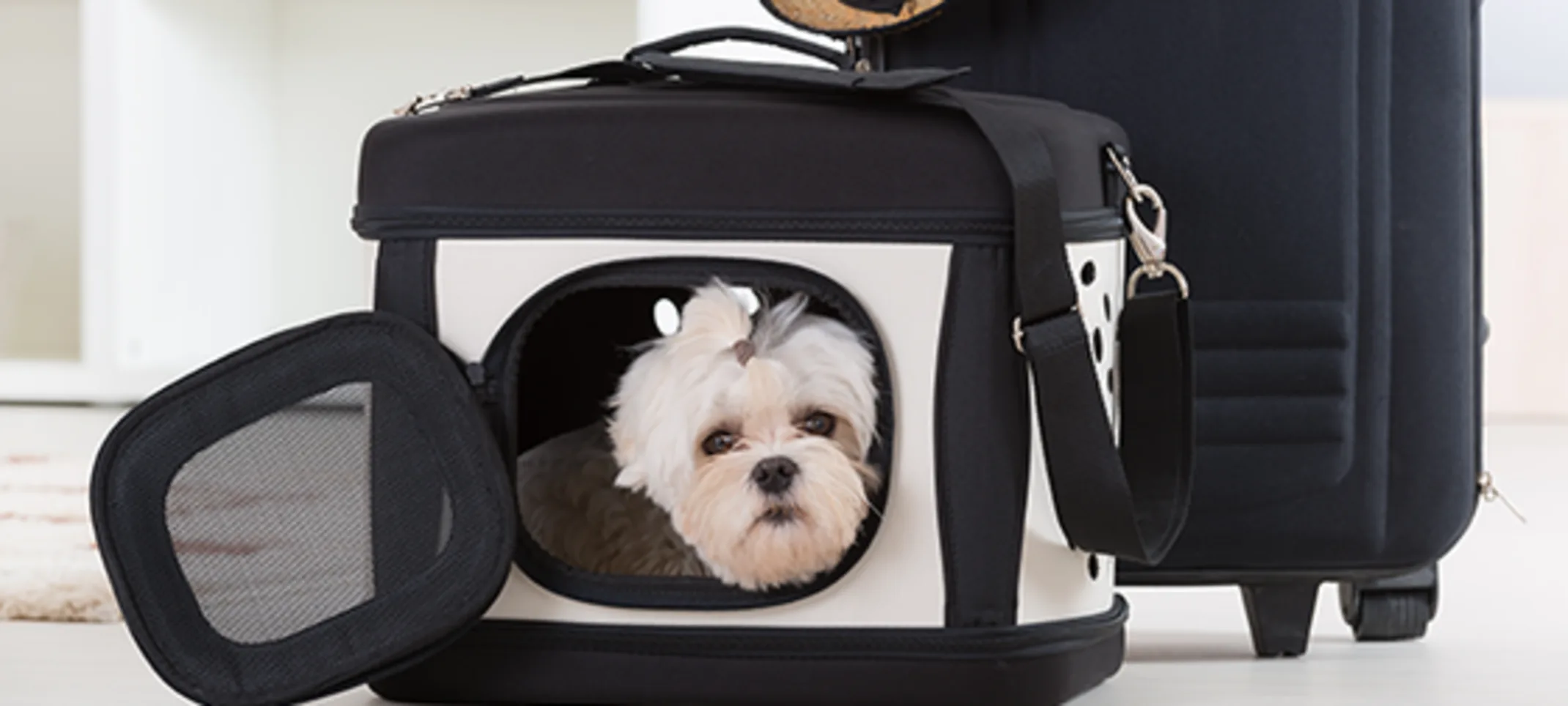Islington Village Animal Hospital
Pet Travel
Traveling with a pet can be stressful for both you and your pet, but planning ahead can help make the experience better.

Traveling with a pet can be stressful for both you and your pet, but planning ahead can help make the experience better.
If possible, it's best to leave your pet at home with a person you trust or at a reputable kennel. When that's not an option, the first step is to take your pet to the veterinarian to make sure that it’s healthy enough to travel and up to date on necessary vaccines.
If your pet requires medication, make sure you have enough to last the length of the trip, as well as any flea, tick, and heartworm prevention products. Some regions have a higher risk of certain parasites, so talk to your veterinarian about the risks associated with where you're going.
Car Travel
Keep your pet in a secure, well-ventilated crate or carrier to keep the animal and passengers safe.
On a hot day, a car can quickly become an oven—even if the windows are open—and lead to heat stroke or death. Never leave an animal alone in a parked vehicle.
Bring plenty of water for your pet to drink.
Some places require documentation, like proof of rabies vaccination. Check ahead and make sure you bring the right paperwork.
Make sure your pet has a proper identification tag in case your pet gets loose.
Air Travel
The danger of air travel is not in the flying, but the loading, unloading or waiting in an unsheltered area exposed to the elements.
Delays can result in time spent on the runway before take-off or after landing, when the plane's cargo areas aren't pressurized. During that time, your pet is confined in the cargo hold without fresh air, and temperatures can fluctuate from hot to cold in short periods of time.
Due to the uncertainty of departure times and weather conditions, unless it is absolutely necessary for your pet to travel by air, we recommend that you leave him/her at home with a trusted friend or family member or at a reputable boarding kennel. To avoid exposure to extreme temperatures, some airlines won't permit pets to fly at certain times of the year.
If you do decide to transport your pet by air, the following guidelines may help to make them safer.
Buy an approved carrier from an airline, pet store, or veterinary hospital weeks before your trip and allow your animal to get familiar with it.
Make sure all screws on the carrier are present and tight. You don't want your pet getting loose in the cargo hold. Most pet travel accidents are a result of poorly constructed carriers.
Don't lock the door in case of emergency, but consider adding a snap closure for security.
A familiar blanket or toy in the carrier might make your pet more comfortable and less afraid.
A container for water should be secured to the inside of the carrier and put where it can be filled without opening the cage. A drip bottle is better than an open bowl, but your pet needs to be trained to use this type of bottle before the flight.
Carriers must be clearly marked "LIVE ANIMALS" and "THIS END UP" in letters at least one inch high. The animal's name and destination, as well as the owner's identification and address, should also be secured to the carrier.
Travel at off-peak hours. Try to book non-stop flights. If you're taking multiple flights, make sure that your pet has been transferred by confirming this with your flight attendant.
Sedate your pet only on the advice of your veterinarian. Sedation may lead to serious complications, including inhibiting your pet's ability to regulate body temperature or breathing problems.
Inform flight attendants that you have a pet on board, especially if your flight is delayed. If your pet is small enough, carry it on board. Many airlines will allow this if the pet carrier fits under the seat in front of you. Check with your airline.
Make sure your pet has received the appropriate vaccinations for the country you're visiting and that the necessary veterinarian-certified papers are with the pet. Consult the customs/immigration department for local vaccination requirements.
Bringing a Pet to Canada
The importation of pets into Canada is regulated by the Canadian Food Inspection Agency.
Under the National Animal Health Program, the Canadian Food Inspection Agency establishes import requirements for all animals and animal products entering Canada-including domestic pets. The Agency can refuse entry to any animal presented for importation.
See import guidelines for the more common pets.
